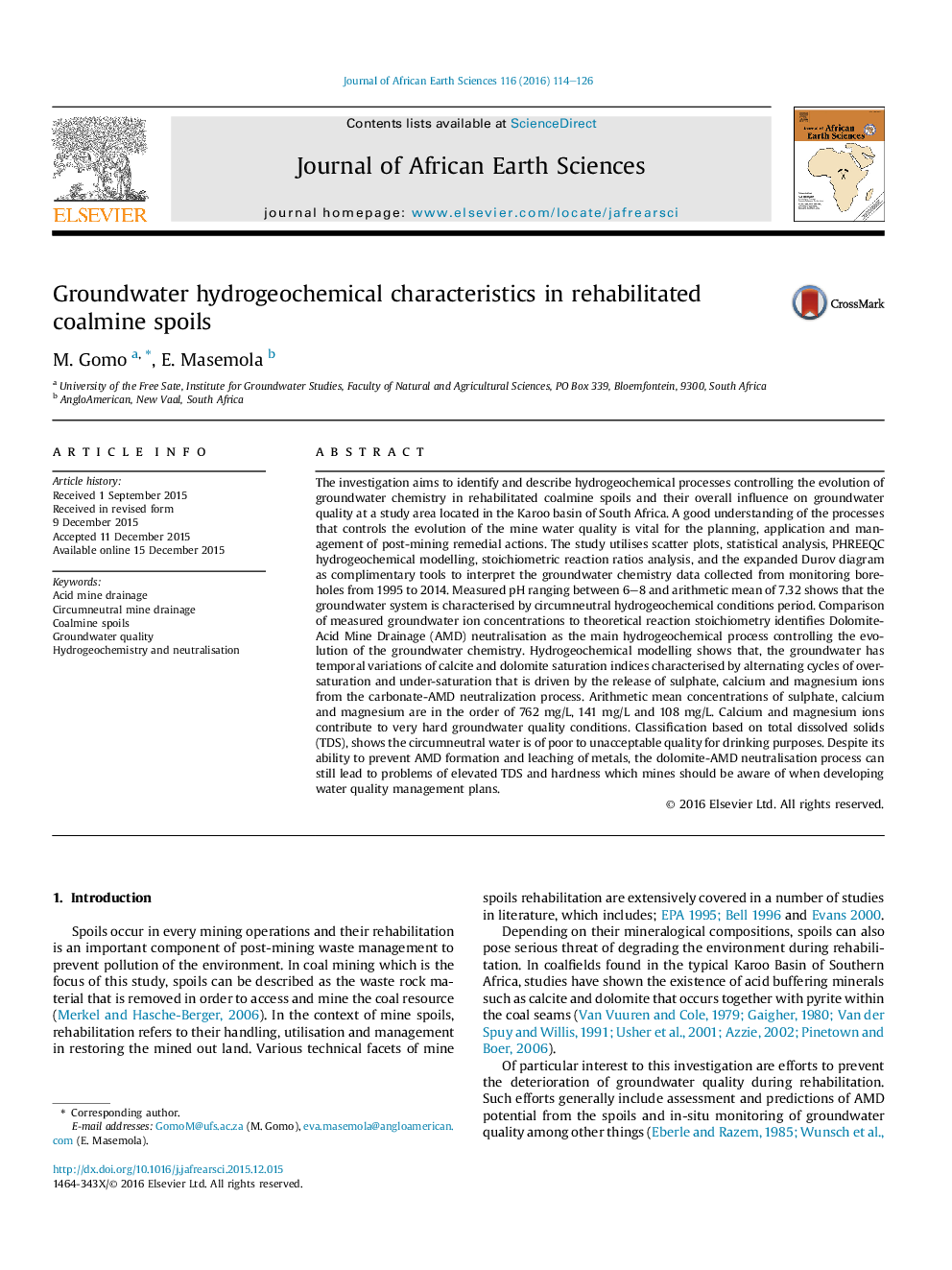| کد مقاله | کد نشریه | سال انتشار | مقاله انگلیسی | نسخه تمام متن |
|---|---|---|---|---|
| 4728294 | 1640192 | 2016 | 13 صفحه PDF | دانلود رایگان |
• We investigated hydrogeochemical characteristics in rehabilitated coalmine spoils.
• Study uses statistics, hydrogeochemical modelling and stoichiometric ratios analysis.
• Results show circumneutral groundwater hydrogeochemical conditions.
• Circumneutral groundwater evolve from Dolomite-Acid Mine Drainage buffering process.
The investigation aims to identify and describe hydrogeochemical processes controlling the evolution of groundwater chemistry in rehabilitated coalmine spoils and their overall influence on groundwater quality at a study area located in the Karoo basin of South Africa. A good understanding of the processes that controls the evolution of the mine water quality is vital for the planning, application and management of post-mining remedial actions. The study utilises scatter plots, statistical analysis, PHREEQC hydrogeochemical modelling, stoichiometric reaction ratios analysis, and the expanded Durov diagram as complimentary tools to interpret the groundwater chemistry data collected from monitoring boreholes from 1995 to 2014. Measured pH ranging between 6–8 and arithmetic mean of 7.32 shows that the groundwater system is characterised by circumneutral hydrogeochemical conditions period. Comparison of measured groundwater ion concentrations to theoretical reaction stoichiometry identifies Dolomite-Acid Mine Drainage (AMD) neutralisation as the main hydrogeochemical process controlling the evolution of the groundwater chemistry. Hydrogeochemical modelling shows that, the groundwater has temporal variations of calcite and dolomite saturation indices characterised by alternating cycles of over-saturation and under-saturation that is driven by the release of sulphate, calcium and magnesium ions from the carbonate-AMD neutralization process. Arithmetic mean concentrations of sulphate, calcium and magnesium are in the order of 762 mg/L, 141 mg/L and 108 mg/L. Calcium and magnesium ions contribute to very hard groundwater quality conditions. Classification based on total dissolved solids (TDS), shows the circumneutral water is of poor to unacceptable quality for drinking purposes. Despite its ability to prevent AMD formation and leaching of metals, the dolomite-AMD neutralisation process can still lead to problems of elevated TDS and hardness which mines should be aware of when developing water quality management plans.
Journal: Journal of African Earth Sciences - Volume 116, April 2016, Pages 114–126
